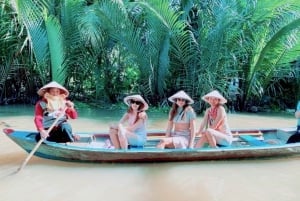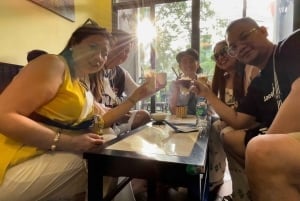Culture and Customs
Culture & Customs: Etiquette and cultural differences
Of course the chance to experience an intriguing and completely different culture is one the main points and main joys of travelling…one that leaves lasting visceral memories maybe even more powerful than their original rendering. As a visitor to a new place, it is important to be respectful of these differences; being cognizant of Vietnamese customs and typical interactions will help make your visit more enjoyable:
- Dress: in most parts of Vietnam, typical dress is quite conservative. This stems from religious backgrounds and also from a desire to shade one’s body from the sun to protect the skin from darkening. Girls: Frankly, cleavage isn’t exposed too much in any Asian culture, while short shorts or skirts aren’t really frowned upon! Yes, this is kind of opposite from Western culture. (See more on this below in the Dress Code section).
- If you are visiting religious sites or temples: cover your shoulders, wear longer shorts/bottoms if possible to cover your knees and remove your shoes if you see everyone else doing it.
- Hats: remove your hat when you enter a religious site or while you address the elderly or revered people such as monks, to be extra polite.
- Emotional approach: even if you find yourself in a uncomfortable situation, try to evaluate whether you are just experiencing a cultural difference or miscommunication before you lose your temper. Compared to some cultures, in Vietnam it is rare to show frustration or annoyance by raising your voice or becoming abusive, as this is extremely impolite and unlikely to achieve a positive outcome.
- Hands and Feet: Pointing your finger is seen as offensive, so try to avoid this particular gesture and use your whole hand instead, if you can. The feet are also the lowest part of the body and it is seen as very rude to point at someone with your foot.
- Patting on the head: not appropriate.
- PDA: Oh yes, public displays of affection, who doesn’t feel at least a little uncomfortable around too much of this?! Too much can be considered offensive, as it is rare to see couples being too touchy or even holding hands. However, sometimes you may see the occasional set of lovebirds in sweet city spots (like by the river) kissing conspicuously under an umbrella. You won’t find yourself drawing an uncomfortable amount of attention (as in say, India), but be respectful as you see fit.
- Nude sunbathing: it’s considered completely inappropriate, even on beaches.
- Chopsticks: yes, try to use them- they are part of the experience! But if you are just more happy to use a fork, no problem- ask/motion to your waiter and they won’t mind bringing you your western tool (even though they may giggle at you :)
Local Tip: Leaving your chopsticks propped vertically in a rice bowl may cause frowns as this looks very similar to incense sticks which are burned for the dead.
- About donations and gift giving: Although it may be heart-pulling and tempting to give money to children beggars- just do not do it! It’s sad, for sure, but that’s why it needs to eventually stop, and giving in only supports and perpetuates the act. If the children go home with money, the parents will see it as a success and a reason to keep the kids out of school so they can beg to provide for the family. As for the disabled and elderly people, who you may notice “selling” lottery tickets for 10,000 VND, this seems to be somewhat customary and accepted among the Vietnamese, since there is a lack of government aid or programs for these groups. It is up to your discretion to help as you may want to, however, keep in mind that it can accentuate the view of tourists being seen as merely money givers, which doesn’t create for an equal relationship among locals and visitors. As a visitor, it isn’t necessary to feel like you have to give money or material things to the people you meet who are less fortunate. Your interest, a smile and your friendship is really the best gift you can give after all.
Dress Code
For most places, there is no dress code. Really, you don’t even need shoes or a shirt to fit in. Sandals and flip-flops are worn by everyone. Shorts and tank-tops are pretty much allowed everywhere.
Remember: it is a common Asian tradition to remove your shoes before entering homes and temples. So it’s also not weird for you to slip off your shoes in a cafe or restaurant. But note that many homes don’t follow this rule any longer… you’ll know when to take your shoes off when you see a huge pile of shoes at an entrance.
Regardless, presentation is part of Vietnamese culture. If you wear dirty or frayed clothing, you won’t get denied anything or treated poorly - but you might get a second look or giggled at. Some people may initially hold less respect for you based on ragged attire.
Oh and here’s a funny thing: You’ll be stunned to see that many Vietnamese wear sweatshirts, jackets, scarves, and even straight-up wool gloves even though it’s absolutely boiling hot out and humid. They do this to protect themselves from the sun. And of course the people who live here have had a lifetime of getting their bodies accustomed to the weather, and a slightly cooler day is noticeable to them - although probably still quite warm feeling for many foreigners.











